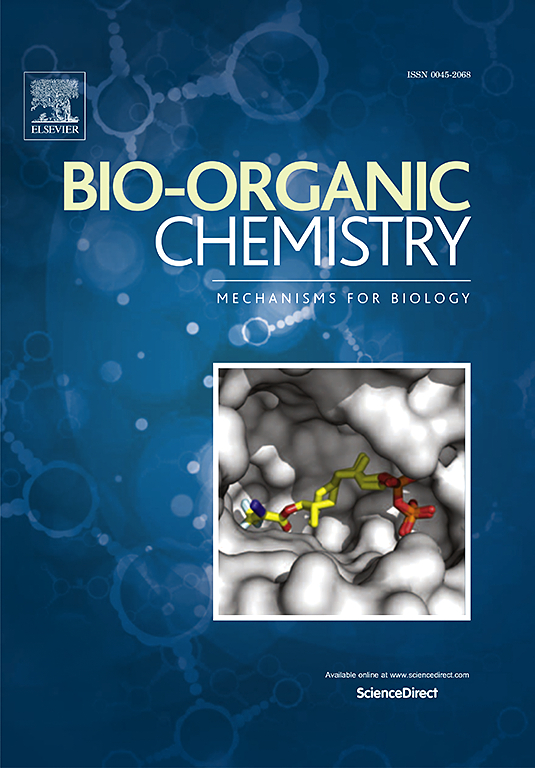Identification of mitoxantrone as a potent inhibitor of CDK7/Cyclin H via structure-based virtual screening and In-Vitro validation by ADP-Glo kinase assay
IF 4.5
2区 医学
Q1 BIOCHEMISTRY & MOLECULAR BIOLOGY
引用次数: 0
Abstract
Cyclin-dependent kinases, CDK7 and CDK9 play critical roles in cancer by regulating transcriptional processes essential for cell proliferation and survival. Their dysregulation leads to aberrant gene expression, promoting oncogenic pathways and contributing to tumor growth and progression. This study aimed to identify a new chemotype for CDK7/9 inhibitors using a structure-based virtual screening approach. Our research led to the discovery of mitoxantrone as an inhibitor of CDK7/H and CDK9/T1 from a library of FDA-approved small molecule drugs. Mitoxantrone, a chemotherapy agent used to treat acute nonlymphocytic leukemia, works by disrupting DNA synthesis and repair, thus inhibiting cancer cell growth. The study found that mitoxantrone effectively inhibits both CDK7/H and CDK9/T1 with IC50 values of 0.675 µM and 5.15 µM, respectively, while showing no inhibition of CDK2/E1 (IC50 > 100 µM) in in-vitro ADP-Glo kinase assay. It binds to the ATP pocket of CDK7 and CDK9, forming crucial H-bonds with MET 94 and CYS 106, respectively. It achieves dock scores of − 12.93 and − 12.59 kcal/mol, and MMGBSA binding energies of − 82.87 and − 81.59 kcal/mol, respectively. Molecular dynamics simulations over 100 ns confirmed stable interactions with MET 94 and CYS 106 in the hinge region of CDK7 and CDK9. The active site sequence alignment helped to understand the differential activity of mitoxantrone for CDK7, 9 and 2 inhibitions. The findings of the paper reveal a novel mechanism of mitoxantrone action that may contribute to its anticancer efficacy.

通过基于结构的虚拟筛选和ADP-Glo激酶试验体外验证,鉴定米托蒽醌是CDK7/Cyclin H的有效抑制剂。
细胞周期蛋白依赖性激酶CDK7和CDK9通过调节细胞增殖和存活所必需的转录过程在癌症中发挥关键作用。它们的失调导致基因表达异常,促进致癌途径并促进肿瘤的生长和进展。本研究旨在使用基于结构的虚拟筛选方法确定CDK7/9抑制剂的新化学型。我们的研究从fda批准的小分子药物文库中发现了mitoxantrone作为CDK7/H和CDK9/T1的抑制剂。米托蒽醌是一种用于治疗急性非淋巴细胞白血病的化疗药物,其作用原理是破坏DNA的合成和修复,从而抑制癌细胞的生长。研究发现米托蒽醌对CDK7/H和CDK9/T1均有抑制作用,IC50值分别为0.675µM和5.15µM,而对CDK2/E1无抑制作用(IC50值为100µM)。它与CDK7和CDK9的ATP口袋结合,分别与MET 94和CYS 106形成关键的氢键。其对接分数分别为- 12.93和- 12.59 kcal/mol, MMGBSA结合能分别为- 82.87和- 81.59 kcal/mol。100 ns以上的分子动力学模拟证实了在CDK7和CDK9的铰链区与MET 94和CYS 106的稳定相互作用。活性位点序列比对有助于了解米托蒽醌对CDK7、9和2抑制的差异活性。本文的研究结果揭示了米托蒽醌的一种新的作用机制,可能有助于其抗癌功效。
本文章由计算机程序翻译,如有差异,请以英文原文为准。
求助全文
约1分钟内获得全文
求助全文
来源期刊

Bioorganic Chemistry
生物-生化与分子生物学
CiteScore
9.70
自引率
3.90%
发文量
679
审稿时长
31 days
期刊介绍:
Bioorganic Chemistry publishes research that addresses biological questions at the molecular level, using organic chemistry and principles of physical organic chemistry. The scope of the journal covers a range of topics at the organic chemistry-biology interface, including: enzyme catalysis, biotransformation and enzyme inhibition; nucleic acids chemistry; medicinal chemistry; natural product chemistry, natural product synthesis and natural product biosynthesis; antimicrobial agents; lipid and peptide chemistry; biophysical chemistry; biological probes; bio-orthogonal chemistry and biomimetic chemistry.
For manuscripts dealing with synthetic bioactive compounds, the Journal requires that the molecular target of the compounds described must be known, and must be demonstrated experimentally in the manuscript. For studies involving natural products, if the molecular target is unknown, some data beyond simple cell-based toxicity studies to provide insight into the mechanism of action is required. Studies supported by molecular docking are welcome, but must be supported by experimental data. The Journal does not consider manuscripts that are purely theoretical or computational in nature.
The Journal publishes regular articles, short communications and reviews. Reviews are normally invited by Editors or Editorial Board members. Authors of unsolicited reviews should first contact an Editor or Editorial Board member to determine whether the proposed article is within the scope of the Journal.
 求助内容:
求助内容: 应助结果提醒方式:
应助结果提醒方式:


